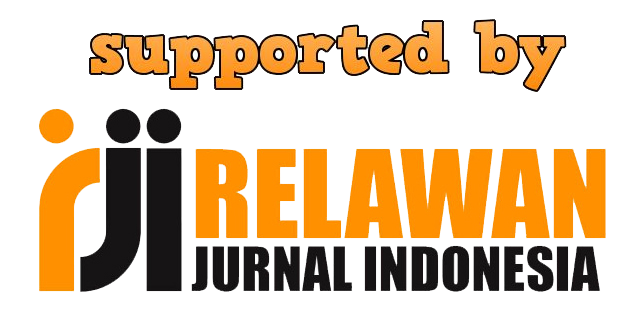GENDER INEQUALITY REPRESENTED IN ENGLISH TEXTBOOKS: A LITERATURE REVIEW
DOI:
https://doi.org/10.23887/jish-undiksha.v10i3.39209Keywords:
Gendered Binary Oppositions, Male Prevalence, English as a Foreign Language Textbooks, Marginalization of WomenAbstract
Ideologies are contested through discourses; thus, textbooks can be a fertile ground for implanting the prevalence of women's marginalization in society, or they can also be used for deconstructing the ideology. The present study aims to provide a general map of how English as a foreign language reflects gendered stereotypes. The study was library research that used the results of previous studies to answer the research questions. Using George's method, the study chose thirty articles published in 2010 - 2021, then critically reviewed. The critical reading was continued with mapping the results of the studies, and their arguments on gender stereotypes included English as Foreign Language textbooks worldwide. The review revealed that there had been prevalent marginalization of women in English textbooks reflected through the depiction of women as less dominant, inferior than men, primarily domestic, generally weak, powerless, voiceless, and passive. Such male prevalence was also found in Indonesian EFL textbooks. Many previous studies admit that male prevalence and women marginalization in EFL textbooks reflect reality in society. Nevertheless, the present study takes the standpoint that calls for the utilization of textbooks to deconstruct gendered binary oppositions that marginalize women by deliberately designing textbooks that impart awareness about gender equity.
References
Abraham, I. (2017). Struktur kepribadian tokoh dalam novel Surat Kecil Untuk Tuhan karya Agnes Davonar. KEMBARA: Jurnal Keilmuan Bahasa, Sastra, Dan Pengajarannya, 3(1), 55–63. https://doi.org/https://doi.org/10.22219/kembara.v3i1.4378
Ahmad, M., & Shah, S. K. (2019). A critical discourse analysis of gender representations in the content of 5th grade english language textbook. International and Multidisciplinary Journal of Social Sciences, 8(1), 1–24. https://doi.org/10.17583/rimcis.2019.3989
Aitchison, J., & Wardaugh, R. (1987). An Introduction to Sociolinguistics. In The British Journal of Sociology (Vol. 38). https://doi.org/10.2307/590702
Al-Qatawneh, S., & Al Rawashdeh, A. (2019). Gender representation in the Arabic language textbook for the ninth grade approved by the Ministry of Education for use in schools in the United Arab Emirates (UAE). Studies in Educational Evaluation, 60(November 2018), 90–98. https://doi.org/10.1016/j.stueduc.2018.12.001
Anggawati, S., Suwastini, N. K. A., & Mahayanti, N. W. S. (2018). Women’s Characterization in Mary Shelley’s Frankenstein. The Fourth International Conference on English Across Cultures, 14–23.
Ariantini, K. P., Suwastini, N. K. A., Adnyani, N. L. P. S., Dantes, G. R., & Jayantini, I. G. A. S. R. (2021). Integrating social media into English language learning: How and to what benefits according to recent studies. NOBEL: Journal of Literature and Language Teaching, 12(1), 91–111. https://doi.org/https://doi.org/10.15642/NOBEL.2021.12.1.91-111
Ariyanto, S. (2018). A Portrait of Gender Bias in the Prescribed Indonesian ELT Textbook for Junior High School Students. Sexuality and Culture, 22(4), 1054–1076. https://doi.org/10.1007/s12119-018-9512-8
Asadullah, M. N., Islam, K. M. M., & Wahhaj, Z. (2018). Gender Bias in Bangladeshi School Textbooks: Not Just a Matter of Politics or Growing Influence of Islamists. Review of Faith and International Affairs, 16(2), 84–89. https://doi.org/10.1080/15570274.2018.1469821
Bahman, M., & Rahimi, A. (2010). Gender representation in EFL materials: An analysis of English textbooks of Iranian high schools. Procedia - Social and Behavioral Sciences, 9, 273–277. https://doi.org/10.1016/j.sbspro.2010.12.149
Barr, W. M. O., & Atkins, B. K. (1980). Women’s Language or Powerless Language. In McConnell-Ginet, Borker, and Furman (pp. 93–110).
Barton, A., & Sakwa, L. N. (2012). The representation of gender in English textbooks in Uganda. Pedagogy, Culture and Society, 20(2), 173–190. https://doi.org/10.1080/14681366.2012.669394
Bernabé-Villodre, M. del M., & Martínez-Bello, V. E. (2018). Analysis of gender, age and disability representation in music education textbooks: A research update. International Journal of Music Education, 36(4), 494–508. https://doi.org/10.1177/0255761418763900
Blangsinga, G. W. K. A. A., Suwastini, N. K. A., Lasmawan, I. W., Adnyani, N. L. P. S., & Rusnalasari, Z. D. (2021). Patriarchal binary oppositions in narrative texts included in English textbook for senior high school in Indonesia. 2nd International Conference on Technology and Educational Science (ICTES 2020), 135–141. https://doi.org/https://dx.doi.org/10.2991/assehr.k.210407.227
Blumberg, R. L. (2008). The invisible obstacle to educational equality: Gender bias in textbooks. Prospects, 38(3), 345–361. https://doi.org/10.1007/s11125-009-9086-1
Brody, L. (2001). Gender, Emotion, and the Family. Harvard: Harvard University Press.
Coates, J. (2013). Women, Men, and Language (3rd editio; G. Leech & M. Short, Eds.). New York: Routledge.
Cobano-Delgado, V. C., & Llorent-Bedmar, V. (2019). Identity and gender in childhood. Representation of Moroccan women in textbooks. Women’s Studies International Forum, 74(November 2018), 137–142. https://doi.org/10.1016/j.wsif.2019.03.011
Curaming, E. M., & Curaming, R. A. (2020). Gender (In)equality in English Textbooks in the Philippines: A Critical Discourse Analysis. Sexuality and Culture, 24(4), 1167–1188. https://doi.org/10.1007/s12119-020-09750-4
Dabbagh, A. (2016). Gender representation under critical image analysis: The case of Iranian ELT textbooks. International Journal of English Language & Translation Studies, 4(4), 39–52.
Damayanti, I. L. (2014). Gender construction in visual images in textbooks for primary school students. Indonesian Journal of Applied Linguistics, 3(2), 100–116. https://doi.org/10.17509/ijal.v3i2.272
De Beauvoir, S. (1956). The Second Sex. London: Lowe and Brydone Ltd.
Dewi, A. A. M. I., Marhaeni, A. A. I. N., & Suwastini, N. K. A. (2018). The Effect of Graphic Organizer upon Reading Comprehension of the Twelfth Grade Students of SMAN 1 Sukawati in Academic Year 2015/2016. Lingua Scientia, 23(1), 64. https://doi.org/10.23887/ls.v23i1.16069
Eckert, P., & McConnell-Ginet, S. (2003). Language and Gender. In Cambridge. https://doi.org/10.1017/CBO9781107415324.004
Emilia, E., Moecharam, N. Y., & Syifa, I. L. (2017). Gender in EFL classroom: Transitivity analysis in English textbook for Indonesian students. Indonesian Journal of Applied Linguistics, 7(1), 206–214. https://doi.org/10.17509/ijal.v7i1.6877
Faludi, S. (1992). Backlash: The Undeclared War Against Women. London: Crown Publishing Group.
Friedan, B. (1979). The Feminine Mistique. In Most. USA: Dell Publishing Co., INC.
Gamble, S. (2014). The Routledge Companion to Feminism and Postfeminism. In The Routledge Companion to Hermeneutics. https://doi.org/10.4324/9781315771854
Gebregeorgis, M. Y. (2016). Gender Construction Through Textbooks: The Case of an Ethiopian Primary School English Textbook. Africa Education Review, 13(3–4), 119–140. https://doi.org/10.1080/18146627.2016.1224579
George, M. W. (2008). The elements of library research: What every student needs to know. Princeton: Princeton University Press.
Gharbavi, A., & Mousavi, S. A. (2012). A Content Analysis of Textbooks: Investigating Gender Bias as a Social Prominence in Iranian High School English Textbooks. English Linguistics Research, 1(1). https://doi.org/10.5430/elr.v1n1p42
Goyal, R., & Rose, H. (2020). Stilettoed Damsels in Distress: the (un)changing depictions of gender in a business English textbook. Linguistics and Education, 58, 100820. https://doi.org/10.1016/j.linged.2020.100820
Hameed, A. (2012). A Gender-Based Study of English Textbooks Produced By Punjab Textbook Board and Oxford University Press for Elementary Level (Dura Space; Vol. 5). Retrieved from http://173.208.131.244:9060/xmlui/handle/123456789/3588
Harashima, H. D. (2005). Sexual bias in an EFL Textbook: A case study. JALT2004 Conference Proceedings, 934–939. Tokyo: JALT.
Hayik, R. (2016). What Does This Story Say about Females?: Challenging Gender-Biased Texts in the English-Language Classroom. Journal of Adolescent and Adult Literacy, 59(4), 409–419. https://doi.org/10.1002/jaal.468
Heilman, M. E. (2012). Gender stereotypes and workplace bias. Research in Organizational Behavior, 32, 113–135. https://doi.org/10.1016/j.riob.2012.11.003
Islam, K. M. M., & Asadullah, M. N. (2018). Gender stereotypes and education: A comparative content analysis of Malaysian, Indonesian, Pakistani and Bangladeshi school textbooks. PLoS ONE, 13(1), 1–24. https://doi.org/10.1371/journal.pone.0190807
Julianti, L., Ikhsanudin, I., & Y, Y. G. S. (2019). A Content Analysis of Gender Bias in When English Rings A Bell Textbooks. International Journal of Learning and Instruction (IJLI), 1(1), 23. https://doi.org/10.26418/ijli.v1i1.33401
Lakoff, R. (1973). Language and Woman’s Place. Language in Society, 2(1), 45–80. https://doi.org/10.2307/4166707
Lan, T., & Jingxia, L. (2019). On the Gender Discrimination in English. Advances in Language and Literary Studies, 10(3), 155. https://doi.org/10.7575/aiac.alls.v.10n.3p.155
Lee, J. F. K. (2018). Gender representation in Japanese EFL textbooks–a corpus study. Gender and Education, 30(3), 379–395. https://doi.org/10.1080/09540253.2016.1214690
Lee, J. F. K. (2019). In the pursuit of a gender-equal society: do Japanese EFL textbooks play a role? Journal of Gender Studies, 28(2), 204–217. https://doi.org/10.1080/09589236.2018.1423956
Lee, J. F. K., & Collins, P. (2010). Construction of gender: A comparison of Australian and Hong Kong english language textbooks. Journal of Gender Studies, 19(2), 121–137. https://doi.org/10.1080/09589231003695856
Lee, J. F. K., & Mahmoudi-Gahrouei, V. (2020). Gender Representation in Instructional Materials: A Study of Iranian English Language Textbooks and Teachers’ Voices. Sexuality and Culture, 24(4), 1107–1127. https://doi.org/10.1007/s12119-020-09747-z
Lestariyana, R. P. D., Widodo, H. P., & Sulistiyo, U. (2020). Female Representation in Government-Mandated English Language Textbooks Used in Indonesian Junior High Schools. Sexuality and Culture, 24(4), 1150–1166. https://doi.org/10.1007/s12119-020-09752-2
Listiani, N. K. M., Suwastini, N. K. A., Dantes, G. R., Adnyani, N. L. P. S., & Jayantini, I. G. A. S. R. (2021). YouTube as digital learning resources for teaching bilingual young learners. Proceedings of the 2nd International Conference on Technology and Educational Science (ICTES 2020), 540(ICTES 2020), 156–162. https://doi.org/https://dx.doi.org/10.2991/assehr.k.210407.230
Maheswari, P. A. M., Adnyani, N. L. P. S., & Suwastini, N. K. A. (2020). Interlanguage Analysis on Indonesian EFL Learners’ Compositions. Lingua Didaktika: Jurnal Bahasa Dan Pembelajaran Bahasa, 14(2), 121–131. https://doi.org/10.24036/ld.v14i2.108643
Mahmud, M. (2015). Language and Gender in English Language Teaching. TEFLIN Journal, 21(2), 172–185. https://doi.org/10.15639/teflinjournal.v21i2/172-185
Millett, K. (2000). Sexual politics. In Feminist Literary Criticism. https://doi.org/10.4324/9781315846163
Nasrullah. (2016). Gender’s Visibility in Textbooks. Inovish Journal, 1(1), 40–55. Retrieved from http://ejournal.polbeng.ac.id/index.php/IJ/article/download/15/15
Parker, R., Larkin, T., & Cockburn, J. (2017). A visual analysis of gender bias in contemporary anatomy textbooks. Social Science and Medicine, 180, 106–113. https://doi.org/10.1016/j.socscimed.2017.03.032
Paudel, J., & Khadka, P. (2019). Analysis of an English Textbook from a Feminist Perspective. International Journal of Humanities, Social Sciences and Education, 6(9), 10–21. https://doi.org/10.20431/2349-0381.0609002
Phillips, S. P. (2005). Defining and measuring gender-A social determinant of health whose time has come. International Journal for Equity in Health, 4(11), 1–4. https://doi.org/http://dx.doi.org/10.1186/1475-9276-4-11
Purnamasari, N. M. G., Putra, I. N. A. J., & Suwastini, N. K. A. (2016). A descriptive study on the use of code mixing by the English teacher at SMAN Bali Mandara in the academic year 2014/2015. Lingua Scientia, 23(2), 1–8. https://doi.org/http://dx.doi.org/10.23887/ls.v23i2.16070
Puspawati, N. W. N., Suwastini, N. K. A., Hutapea, J. V., Dantes, G. R., & Adnyani, N. L. P. S. (2021). Consumption and production of short film: Toward the conceptualization of multimodal language learning for developing 6Cs skills in the digital age. Journal of Physics: Conference Series, 1810(1). https://doi.org/10.1088/1742-6596/1810/1/012054
Rachmijati, C., & Cahyati, S. S. (2018). Gender Representation in Textbook Bahasa Inggris Grade X. ELTIN JOURNAL, Journal of English Language Teaching in Indonesia, 6(2), 59. https://doi.org/10.22460/eltin.v6i2.p59-69
Sari, N. T. A. (2011). Visible Boys, Invisible Girls : the Representation of Gender. Indonesian Journal of Applied Linguistics, 1(1), 80–99. Retrieved from http://jurnal.upi.edu/file/07_Nadia_Visible_Boys.pdf
Setyono, B. (2018). The Portrayal of Women in Nationally-Endorsed English as a Foreign Language (EFL) Textbooks for Senior High School Students in Indonesia. Sexuality and Culture, 22(4), 1077–1093. https://doi.org/10.1007/s12119-018-9526-2
Shamsuddin, C. M., & Hamid, B. A. (2017). Representational meanings of gender stereotyped professional occupation images in selected Malaysian English language textbooks. 3L: Language, Linguistics, Literature, 23(4), 128–142. https://doi.org/10.17576/3L-2017-2304-10
Suhartono, S., & Kristina, D. (2018). Gender Bias in Textbooks and Test Items of English Language Learning in the Indonesian Context. PRASASTI International Conference on Recent Linguistics Research, 166(Prasasti 2018), 425–428. https://doi.org/10.2991/prasasti-18.2018.78
Sulaimani, A. (2017). Gender Representation in EFL Textbooks in Saudi Arabia: A Fair Deal? English Language Teaching, 10(6), 44. https://doi.org/10.5539/elt.v10n6p44
Sunderland, J. (2006). Language and gender: An advanced resource book. 37(02). https://doi.org/10.1017/s0047404508080445
Suwastini, N. K. A. (2013). Perkembangan Feminisme Barat dari Abad Kedelapanbelas hingga Postfeminisme: Sebuah Kajian Teoretis. Jurnal Ilmu Sosial Dan Humaniora.
Suwastini, N. K. A., Banjar, I. D. A. O. V. J., Tienty, L. P. C. A., Sasmita, I. M. D. G., & Nitiasih, P. K. (2020). Rachel Chu as Liberal Feminist in Kevin Kwan’ S Crazy Rich Asians (2013). International Journal of Language and Literature, 4(3), 123–132.
Suwastini, N. K. A., Suprianti, G. A. P., & Fitrianti, N. K. (2018). Are the women really strong? An analysis on the characterizations of the female main character in Murti Bunanta’s “Seri Wanita Perkasa.” In M. H. Santosa, I. M. S. Paramarta, N. L. P. S. Adnyani, & I. G. A. L. P. Utami (Eds.), International Conference on English Across Culture (Vol. 4, pp. 108–119). https://doi.org/10.1002/jctb.5000423502
Suwastini, N. K. A., Utami, I. A. I., & Galla, E. W. (2018). The popular and the academic: performing analysis on Disney’s Beauty and the Beast (2017). In M. H. Santosa, I. M. S. Paramarta, N. L. P. S. Adnyani, & I. G. A. L. P. Utami (Eds.), Fourth International Conference on English Across Culture (pp. 47–57). Singaraja: Undiksha Press.
Suwastini, N. K. A., & Yukti, W. G. S. (2017). Errors analysis in short biography text written by the 11th grade students of a vocational high school in Singaraja. International Journal of Language and Literature, 1(1), 1–10. Retrieved from https://ejournal.undiksha.ac.id/index.php/IJLL/article/download/9612/6116
Taylor, F. (2003). Content analysis and gender stereotypes in children’s books. Teaching Sociology, 31(3), 300–311. https://doi.org/10.2307/3211327
Tong, R. (2009). Feminist thought (Third Edit). Westview Press.
UNESCO. (2012). Gender mainstreaming in teacher education policy: A training module. Retrieved from http://unesdoc.unesco.org/images/0022/002217/221707E.pdf
Utami, I. G. A. L. P., Suwastini, N. K. A., Artini, N. N., & Kultsum, U. (2020). Values of character education in the characterizations of Dory in Disneys’ animated feature Finding Dory (2016). International Conference on Innovative Research Across Disciplines (ICIRAD 2019), 394(ICIRAD 2019), 119–126. https://doi.org/10.2991/assehr.k.200115.020
Widasuari, N. W. D., Suwastini, N. K. A., Wahyuni, L. G. E., & Visestayati, N. P. A. (2020). Lucy Pevensie’S Characterizations in C.S. Lewis’ Narnia: the Lion, the Witch, and the Wardrobe. International Journal of Language and Literature, 4(1), 47. https://doi.org/10.23887/ijll.v4i1.30227
Wollstonecraft, M. (1976). A Vindication of the Rights of Woman. London: Dover Publication.
Yang, C. C. R. (2011). Gender representation in a Hong Kong primary English textbook series: The relationship between language planning and social policy. Current Issues in Language Planning, 12(1), 77–88. https://doi.org/10.1080/14664208.2011.541390
Yang, C. C. R. (2016). Are males and females still portrayed stereotypically? Visual analyses of gender in two Hong Kong primary English Language textbook series†. Gender and Education, 28(5), 674–692. https://doi.org/10.1080/09540253.2015.1103839
Yasin, M. S. M., Hamid, B. A., Othman, Z., Bakar, K. A., Hashim, F., & Mohti, A. (2012). A Visual Analysis of a Malaysian English School Textbook: Gender Matters. Procedia - Social and Behavioral Sciences, 69(Iceepsy), 1871–1880. https://doi.org/10.1016/j.sbspro.2012.12.140
Yonata, F., Riau, K., Mujiyanto, Y., & Semarang, U. N. (2017). The Representation of Gender in English Textbooks in Indonesia. Language Circle - Journal of Language and Literature, 12(1), 91–102. https://doi.org/10.15294/lc.v12i1.11473
Downloads
Published
Issue
Section
License
Authors who publish with the Jurnal Ilmu Sosial dan Humaniora agree to the following terms:
- Authors retain copyright and grant the journal the right of first publication with the work simultaneously licensed under a Creative Commons Attribution License (CC BY-SA 4.0) that allows others to share the work with an acknowledgment of the work's authorship and initial publication in this journal.
- Authors are able to enter into separate, additional contractual arrangements for the non-exclusive distribution of the journal's published version of the work (e.g., post it to an institutional repository or publish it in a book), with an acknowledgment of its initial publication in this journal.
- Authors are permitted and encouraged to post their work online (e.g., in institutional repositories or on their website) prior to and during the submission process, as it can lead to productive exchanges, as well as earlier and greater citation of published work. (See The Effect of Open Access)


.png)
.png)













